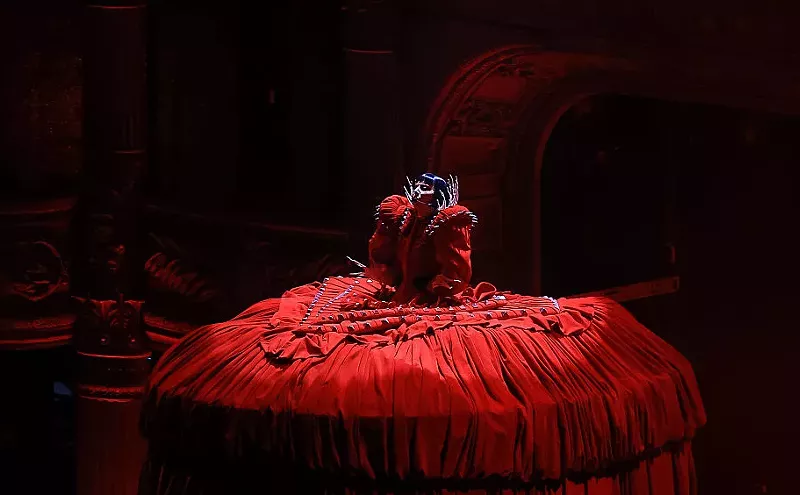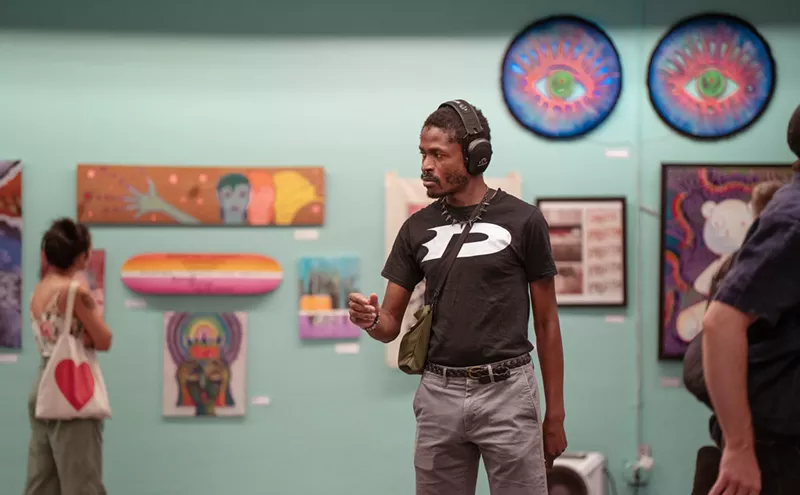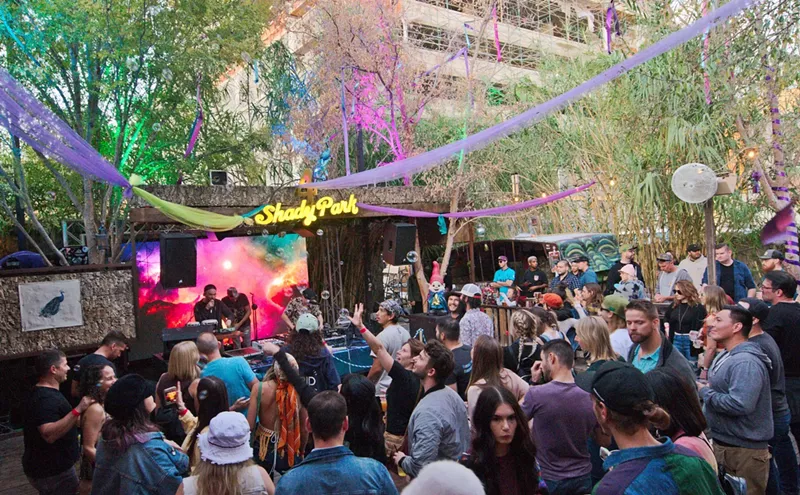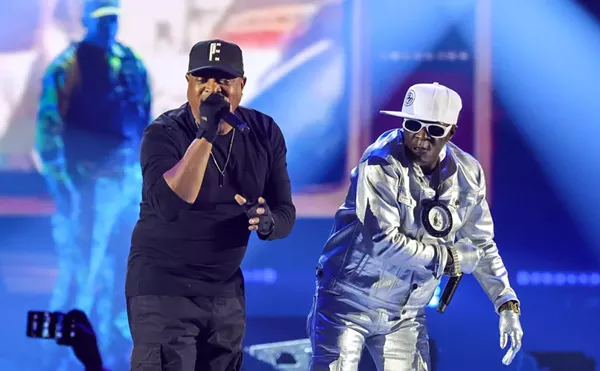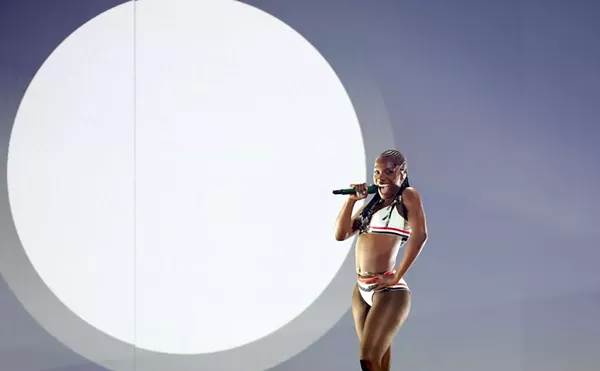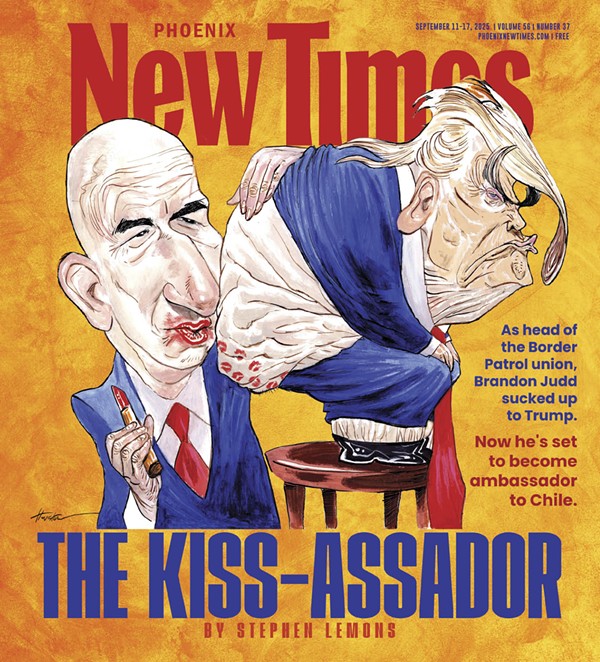Dandys rule, okay? They have never not ruled, they still rule, and I suspect they always will. Turning 20 years old, Portland's premier rock band, the Dandy Warhols, can claim one of its generation's most eccentric careers, making the quartet one of the last great rock 'n' roll acts in existence.
You can label the Warhols "neo-psychedelia," just a rehash of that iconic 1960s clatter, but the truth is that vibe never died. In the first place, nobody "discovered" whatever sound or genre was mainstream 55 years ago — it was always there in some form, just waiting to be seized. And it never went away, even if it may have lost some widespread appeal over the years.
Noted for their tongue-in-cheek egotism and unhinged party vibes, the Dandys channel that familiar "retro" wave with modern definition, a unique fervor that bounces across ear-pleasing, soul-soothing landscapes the group's adopted with complete, magnificent poise. In other words, the band is an octahedral peg that doesn't fit into any square holes.
The Warhols -- fronted by singer/guitarist Courtney Taylor-Taylor, guitarist Peter Peter Holmström, keyboardist Zia McCabe, and Taylor-Taylor's cousin Brent DeBoer, who replaced drummer Eric Hedford in 1998 -- are best known for their hit "Bohemian Like You" from Thirteen Tales from Urban Bohemia.
After spending the better part of their career on Capitol Records, producing joint-ripping sensations such as "Smoke It" and drizzly comedowns like "Sleep" and "You Were the Last High," the Dandys broke away from Capitol in 2008, starting their own label, Beat the World Records.
Finally independent, the band released Earth to the Dandy Warhols, featuring some of their best tracks to date, including the syncopated jam "Welcome to the Third World" and the dizzying drone machine "Wasp in the Lotus." Fulfilling a promise on the opening track of Welcome to the Monkey House (lyrics: "When Michael Jackson dies / We're covering 'Blackbird'"), McCabe sang on a cover tribute to the late King of Pop. Twenty-twelve saw This Machine, a reference to the "This machine kills fascists" sticker on Woody Guthrie's guitar. With tracks like "Autumn Carnival" and "I Am Free," it presented a more somber reflection on the band's long, varied career. Yet despite eight studio albums, two compilation discs, and six EPs, the Dandys released their first and only live album this year, Thirteen Tales from Urban Bohemia -- Live at the Wonder. As the title suggests, it's a straight play through the band's landmark third album. New Times sent Taylor-Taylor a few questions (he prefers e-mail to phone interviews) asking why the band chose to approach its first live release this way and why it chose that album, in particular.
"2013 was the 13th anniversary of Thirteen Tales. None of our other records have any coincidence like three 13s," Taylor-Taylor says. "The 'whole record in revue' was such a trend -- and maybe still is -- that we really didn't want to do it at all. Had it been a more obscure record, it would've seemed more interesting but probably would have not sold as well. Just another coincidence that turned out rather well."
It's common knowledge how difficult it is making a live album that doesn't suck. Hua Hsu, writing for Slate, described it best: "The excitement of seeing your favorite band is rarely captured on live albums, which inevitably miss the crucial extra-musical moments: the crowd's forward lurch when the band takes the stage; a good bit of 'guitar face' during a cunning solo; a wink the bassist exchanged with you (and a thousand other people)."
In his book How Music Works, David Byrne deconstructs a fairly evident but profound truth: Fans attend shows in order to experience their favorite songs in a familiar, yet fresh context. Life-changing songs (personally, innumerable Dandy songs would qualify) are broken down, pieced back together and sewn up in a new, amazing package that exists solely in the moment.
Rendering that kind of impactful occurrence on vinyl or ones and zeroes is incredibly difficult. From a few initial listens, however, it seems the Dandy Warhols succeeded in sufficiently re-creating that energy from their intoxicating live act.
But why play an album straight from beginning to end?
"There may be many ways to sequence a record and live is no different, except that we're doing it vertically between albums as well. By the end of every tour, there is theoretically a new record sequenced with those new versions of the songs that 'made it in,'" Taylor-Taylor says. "We have recorded many gigs, but because of the people involved in this one, it actually got finished. Perhaps also because our gigs are often over two hours, and mixing a one-hour record seemed far less daunting."
Of course, you can't mention the Dandys without discussing the Brian Jonestown Massacre and Dig!, Ondi Timoner's infamous documentary that explored the friendship and rivalry of the two bands. Taylor-Taylor and Anton Newcombe, BJM's frontman, became the focal point of a growing resurgence of garage rockers coupled with acid rock. They set out to start a revolution and in many ways, did just that.
The seven-year chronicle of the two groups may have won the Documentary Grand Jury Prize at Sundance Film Festival in 2004, but many involved feel there is more fiction than fact represented in the film. Taylor-Taylor was quoted in The Big Issue, saying, "It's a movie, not a documentary," adding, "[T]he end result doesn't feel very real. They're like the band that fights all the time and we're the band that parties all the time. And neither of us make music ever."
In fact, the bands frequently write songs about each other, often ironically. The Dandys penned "Not If You Were the Last Junkie on Earth" in response to Newcombe's heroin addiction. BJM responded with "Not If You Were the Last Dandy on Earth." The lead single from Welcome to the Monkey House included "We Used to Be Friends," a moody synth-led number that mulls over the years that Taylor-Taylor and Newcombe weren't on speaking terms.
Though it seems everyone involved dislikes the hype and what they say is misrepresentation in the film and would like to move on, both bands continue to joke about what made their careers so notorious. I met Newcombe and Taylor-Taylor within weeks of each other's tours through Arizona in 2012 and, without prompting, both musicians brought up the documentary and their supposed "falling out." In reality, things are amiable, and this year's Austin Psych Fest will be the first time in years that BJM and The Dandy Warhols will share a stage.
"We're playing different nights. We'll try to get to each other's gigs, and if that's do-able, then we may try to jam one out," Taylor-Taylor says. "It's always nice to hook up on the rare occasion we're in the same town, but you're right in that it's been a decade since we played a tune together."
The good news is, with such a diverse catalog, the Dandy Warhols are the perfect band for carrying one through every intoxicating high, every brutal comedown, every stretch of ennui, and every white-knuckled spell of despair. The great news is they haven't lost steam yet. Here's to another 20 years.
The Dandy Warhols are scheduled to perform on Monday, April 28, at Crescent Ballroom.




